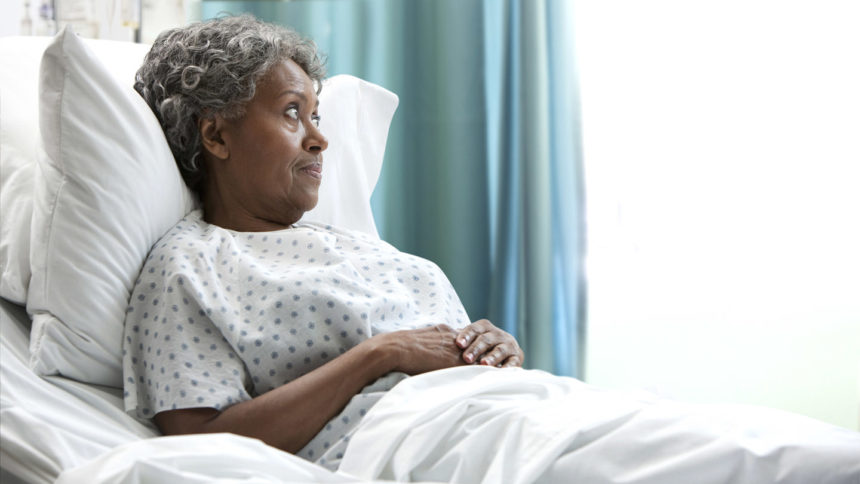
Nursing home operators have underreported the number of pressure injuries in Medicare residents by as much as 40%, said University of Chicago researchers, who have joined a push for less provider-reported data.
“I’m hoping that CMS will recognize that their measures are inaccurate and misleading, and I hope that they shift to using more objective data sources for measuring quality of care in nursing homes,” she added.
Researchers compared resident-level data used to feed Nursing Home Compare ratings to patient-level hospital admission data and skilled nursing facility claims for Medicare beneficiaries. They found that between 2011 and 2017, nursing homes self-reported only 59.7% of hospitalized pressure injuries between stages 2 and 4 among long-stay residents.
The study was published Tuesday in Medical Care. The research team evaluated records for nearly 500,000 diagnosed pressure injuries in hospital and skilled nursing patients between 2011 and 2017. Team members also included Lauren J. Gleason, MD, MPH, and Zihan Chen, MPP.
Pattern of providers underreporting?
University of Chicago researchers previously studied nursing homes’ underreporting of fall severity to the Centers for Medicare & Medicaid Services. They’re now also examining the accuracy of self-reported data on urinary tract infections and pneumonia cases.
“This research is really important in showing that nursing homes often underreport important health changes among their residents,” Harvard Medical School health policy expert David Graboswki, PhD, told McKnight’s Long-Term Care News Thursday. “For this reason, we often down-weight or even exclude self-reported measures in value-based payment models and public quality reporting. In nursing homes, there is a major distrust of the quality measures reported in the Minimum Data Set assessment for exactly this reason.”
Consumer advocates have long criticized the dependence on self-reported data in the nursing home rating process. Self-reported measures taken from the MDS are combined with health inspections and other factors to create an overall star rating and category-specific ratings.
Pressure injuries are of major concern to skilled nursing residents and their families for obvious health reasons. Such wounds are also a major contributor to nursing home litigation.
Those who want a rating system based fully on externally produced data should probably advocate for measures other than highly clinical items such as pressure injuries, said Kathleen Unroe, MD, a geriatrician and member of the technical expert panel of the CMS Five-Star Quality Rating System.
If regulators wish to keep certain clinical factors in play, then nurse-level observation and bedside assessments may be the only way to collect information on them. In an interview with McKnight’s, she said the goal should be for CMS and state agencies to select metrics that reveal important details about care without disrupting workflow or creating additional tasks.
“I think there’s a real balance here because I think everyone feels better when there is third-party external measurement. We feel better about the consistency of that metric, and health inspections are part of the Nursing Home Compare System because of that,” said Unroe, also a research scientist at the Indiana University Center for Aging Research at Regenstrief Institute. “But that needs to be balanced by choosing metrics that are meaningful to residents and their families.”
That’s why hospital readmission rates have been a great measure of quality improvement, Unroe added. It’s a metric for which providers can capture and report measurable data; it provides meaningful information to consumers; and it allows providers to work strategically to improve performance.
When it comes to alternatives or supplements to clinical measures captured in the MDS, Unroe said, she supports the inclusion of process measures, such as indications that staff have completed specific training to boost clinical skills.
“That is fundamental to metrics,” she said.
Moving away from provider-submitted
CMS has shown its willingness to move away from self-reported measures in recent years. Unroe pointed to the addition of payroll-based journal data points for staffing measures, more of which were incorporated into star ratings this summer.
The agency is also looking toward new ways to capture data as it expands its quality improvement and payment incentive programs. The final 2023 pay rule outlines a new QRP requirement for flu vaccine reporting among healthcare workers, while future value-based purchasing measures will track healthcare associated infections requiring hospitalizations starting and total nursing hours per resident day in 2026, and discharge to community in 2027.
“In terms of the new measures, the NHSN flu vaccine measure is self-reported by the facility,” Grabowski noted. “However, the proposed SNF VBP measures are based on claims and payroll-based journal staffing. As a result, I believe these new measures are a step in the right direction.”




